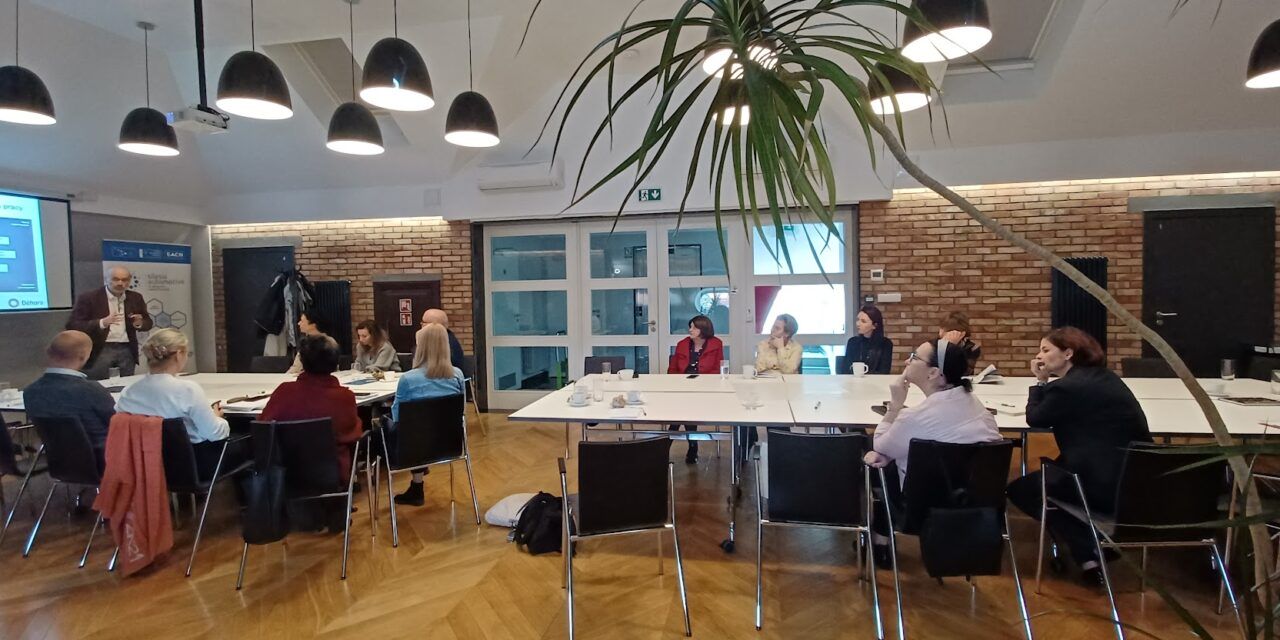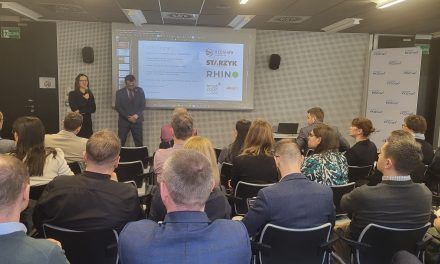The BPCC’s Manufacturing Industries Policy Group has been in existence since 2015; its meetings take place across Poland’s manufacturing heartlands, focusing on issues of greatest concern to industry.
On 4 October, the group met in Gliwice, at the premises of the Silesian Automotive and Advanced Manufacturing cluster, part of the Katowice Special Economic Zone. The subject was optimising working time, the participants mainly HR managers from automotive plants in Upper Silesia.
The event was opened by Łukasz Górecki, director of the cluster, who welcomed participants and gave an update about how the region’s manufacturers were coping with challenging market conditions. The BPCC’s chief advisor, Michael Dembinski, presented an overview of the Polish economy, the mid-term prospects which are predicated all by the outcome of the war in Ukraine. Rising energy costs, supply-chain disruption caused by geopolitical shifts, the pandemic and wage and price inflation all contribute towards highly volatile market conditions.
Given the strength of the Polish labour market (Poland currently has the second-lowest unemployment rate in the EU, standing at 2.8%, according to Eurostat), recruitment and retention is the biggest HR challenge facing manufacturing industry in Poland today.
Dr Paweł Mlicki, senior advisor from Déhora, and Michał Kibil from law firm DGTL, explained how important working time is for any manufacturing business, in terms of health and safety, employee satisfaction and productivity. They presented the three main models of working time, with a focus on the shift-work required to keep assembly lines going 24/7. How this has to confirm with the new regulations in the amended Polish Labour Code was explained; problems associated with balancing the demands of production schedules with employees’ priorities were also discussed.
Society is undergoing a slow but inexorable shift from prioritising money over time to time over money. This was underlined by an anecdote about two factories across the road from each other – one placed a billboard advertising that it paid 3,000 złotys for a 160-hour month, its rival countered that it paid 3,000 złotys for a 150-hour month, attracting a significant number of employees from the neighbouring factory.
One highly effective answer is to introduce algorithms that analyse production data, looking at peaks and troughs across the year, month, week and day, and software that allows employees to match their desired working time to the real requirements on the assembly line. An employee questionnaire, conducted by a trusted external firm, should be a starting point.
The practical workshop-based event, drawing strongly on case studies and key performance indicators, gave participants many powerful insights, offering new ways of optimising the management of working time in factories.


































